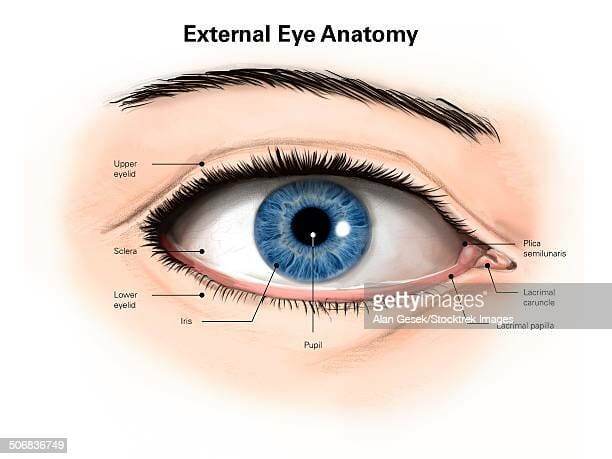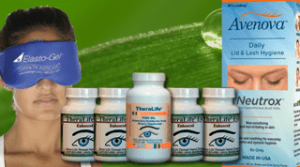How to treat dry eyes
If your dry eyes cause irritation, it affects both the skin and eyes.
Dry eyes may cause permanent eye problems.
Dry eyes occur after the tear gland produces fewer tears and evaporates faster.
The absence of adequate eyesight may result in multiple complications, such as double vision, and it also aggravates eye infections.
Some people can relieve their discomfort by using eye drops or homeopathic remedies.
It is equally important to understand the underlying cause to prevent or manage it.
Dry eye is a condition that occurs when tears cannot properly lubricate the eyes.
This is caused by either too few tears ( or drained too much through tear ducts) or an increase in tear evaporation.
If not treated, dry eye can cause lasting damage to the corneal surface and declining vision.
The gland continually secretes tears which moisten, lubricate, and protect the surface of the eye.
Excess tears drain into small ducts which empty into the nasal cavity.
If not treated, dry eye can cause lasting damage to the corneal surface and declining vision
Overview- treat dry eyes
Dry Eye Disorders occur when your natural tears are ineffective at giving lube to your eyes.
Tears are inadequate and unstable due to numerous factors.
Dry eye syndrome can occur if one produces fewer tears than usual.
Tear glands and tear ducts The tear glands (lacrimal glands), located above each eyeball, continuously supply tear fluid that’s wiped across the surface of your eye each time you blink your eyelids.
This reduce tear production causes tear instability which causes irritation to the eyes and damages its surface.
Dry eyes cause discomfort.
The skin on dry eyes could be burnt.
It’s possible to develop dry eyes when flying, sitting in an air-conditioned room riding a bike or looking at a computer for several hours.
Dry skin treatment is beneficial for the eye and will help you feel relaxed.
Dry eye symptoms
What are the symptoms of dry eye?
Symptoms of dry eye is irritation, blurred vision, gritty scratching or burned eyelashes; an intense sense of something inside the eyes.
Three layers of tear components
Tears are made up of three layers: oil, water, and mucus.
Each component protects and nourishes the front surface of the eye.
A smooth oil layer helps prevent evaporation of the water layer, while the mucin layer spreads the tears evenly over the surface of the eye.
If the tears evaporate too quickly or do not spread evenly over the cornea due to deficiencies with any of the three tear layers, symptoms of dry eye can develop- blurred vision, burning, itching or redness.
A healthy tear film on the eye is necessary for good vision.
Dry eyes develop when the eye is unable to maintain a healthy coating of tears.
Causes of dry eyes
Dry eyes could mean: Your glands don’t make enough tears to keep your eyes wet Your tears dry up too fast.
When there is an imbalance or deficiency in this tear system, or when the tears evaporate too quickly, a person may experience dry eye.
Dry eyes occur for as many reasons as possible to disrupt healthy tearfilm.
Your tear film consists of fatty oils, water or mucus.
It helps keep the eyes’ surfaces clean.
Symptoms of one of these layers are usually caused by a dry eye.
Tear film dysfunction
Causes of tearfilm dysfunction include
- hormonal changes,
- autoimmune diseases,
- inflamed eyelids or
- allergic atopic conditions.
For many individuals, dry eyes can result from reduced tears or increased tear evaporation.
Dry eye occurs when tear production is not balanced with the drainage system. Dry eyes can occur because dry eyes can damage front surfaces and impair the visual system and may cause damage to a patient’s face.
Increased tear evaporation
Meibomian gland dysfunction
Oil film produced on eye lids can cause clogging.
The blocked meibomian gland is more commonly found in people prone to rosacea and other skin conditions.
Typical reasons for increased tear evaporatement include:
- Blepharitis /meibomian gland dysfunction . “Blepharitis/meibomian gland dysfunction causes decreased production or altered composition of oil and is a common condition associated with rosacea,
- Demodex mites,
- graft versus host disease and other conditions,
Pain sensation, such as dryness or discomfort, is part of the creation of tears, so eyes with decreased sensation will tear.
Decreased tear production
The majority of patients with dry eye have chronic inflammation (swelling) in the tear glands (lacrimal glands) that line the eyelid and in the conjunctiva (the thin lining on the inside of the eyelids and the front part of the eye)
Autoimmune diseases
insufficient tear production is often associated with an autoimmune or inflammatory systemic condition such as Sjögren’s , sarcoidosis , lupus or rheumatoid arthritis , which can damage the tear glands.
Pain sensation, such as dryness or discomfort, is part of the creation of tears, so eyes with decreased sensation will tear less.
In addition, since normal pain sensation is necessary for corneal surface cell regeneration, the loss of that sensation is detrimental to the health of your eyes.
Other common causes of dry eyes include:
Dry environment or workplace (wind, air conditioning)
Sun exposure
Smoking or second-hand smoke exposure
Cold or allergy medicines
Wearing contact lenses
Heat or chemical burns
Previous eye surgery
Use of eye drops for other eye diseases
A rare autoimmune disorder in which the glands that produce tears are destroyed ( Sjögren syndrome )
Diagnosis – to treat dry eyes
Your eye doctor can check for dry eye as part of a comprehensive dilated eye exam.
The exam is simple and painless — your doctor will give you some eye drops to dilate (widen) your pupil and then check your eyes for dry eye and other eye problems.
Dry eyes are diagnosed by undergoing thorough eye examinations.
- Testing that emphasizes measuring the quantity and quality of tears forming within the eye.
- Tests may include:
- Visual acuity measurement
- Slit lamp exam
- Diagnostic staining of the cornea
- tear film Measurement of tear film break-up time (TBUT)
- Measurement of rate of tear production (Schirmer test)
- Measurement of concentration of tears (osmolality)
Dry Eyes Treatment- to treat dry eyes
Treatment for dry eye syndrome depends largely on the severity of the disease.
Artificial tears to treat dry eyes
Mild cases of dry eye syndrome require no more than use of artificial tear solutions over the counter and hot compresses, with eyelid massage using ophthalmic ointments.
The first step in treatment is artificial tears.
These come as preserved (screw cap bottle) and unpreserved (twist open vial).
Preserved tears are more convenient, but some people are sensitive to preservatives.
There are many brands available without a prescription over the counter.
Start using the drops at least 2 to 4 times per day.
If the condition is not sufficiently managed with artificial tears, you might use sustained-release eye lubricants,
An insert placed in the eye area slowly dissolves and thickens the tear film.
Your doctor might also recommend prescription eyedrops.
Sclera Lenses- to treat dry eyes
You may also opt for scleral lenses, which are special contact lenses that trap moisture onto the eye’s surface.
Punctal Plugs- to treat dry eyes
In-office Procedures Punctal occlusion: During this painless procedure, small tear draining holes (tear ducts) at the corner of the eye are blocked with tiny plugs in order to increase tears.
Thermal Pulsation- to treat dry eyes
Thermal pulsation: Specialized devices provide controlled heat energy to the meibomian oil glands.
Prescription eye drops- to treat dry eyes
The doctor might give you
- Testosterone cream that you apply to your eyelids. It can help your oil glands work better. Dry eye can be related to a lack of testosterone in the oil glands
- Cyclosporine ( Cequa , Restasis ) . This prescription eye drop helps your eyes boost tear production.
- Lifitegrast ( Xiidra ). These drops are taken twice daily to kick-start tear production.
- Varenicline ( Tyrvaya ) . This is a nasal spray that can be taken twice a day in each nostril to increase tear production which can relieve dry eye.
- You can use steroid eye drops, for short periods, along with long-term measures.
- Punctal plug. These measures increase your tear level by blocking the tear ducts through which tears usually go from your eye to your nose. Tear plugs are easy to remove, but sometimes they come out on their own or fall down the tear drain. They can make your eyes feel better and lower your need for artificial tears.
- Lipiflow. This medical device uses heat and pressure to unclog blocked glands on your eyelids. These glands produce the oil in your tears. It keeps your eye moist and prevents your tears from evaporating.
- Testosterone cream. Dry eye can be related to a lack of testosterone in the oil glands on
- Surgery. In some cases, dry eye can happen because your lower eyelids are too loose, causing tears to drain too quickly out of your eye. If this is the cause of your dry eye.
Home remedies to treat dry eyes
DO NOT smoke.
Avoid second-hand smoke, direct wind, and air conditioning.
Use a humidifier, particularly in the winter.
Limit allergy and cold medicines that may dry you out and worsen your symptoms.
Purposefully blink more often.
Rest your eyes once in a while.
Clean eyelashes regularly and apply warm compresses.
You can take alpha omega fatty acids or fish oil or flaxseed oil orally (by mouth) to improve dry eye.
Take frequent breaks when you are doing something that requires close concentration (such as using a computer or reading), and blink frequently.
Take artificial tears frequently.
Wear sunglasses when you are outside to protect your eyes from wind and sun
Drink plenty of water — try for 8 to 10 glasses every day
Get enough sleep — about 7 to 8 hours a night
Treat dry eyes – Best treatment- TheraLife
References
References Brissette AR, Bohm KJ, Starr CE. Dry eye overview: classification and treatment overview. In: Mannis MJ, Holland EJ, eds. Cornea . 5th ed. Philadelphia, PA: Elsevier; 2022:chap 31. Goldstein MH, Rao NK.
National Eye Institute. University of California, Berkeley. Review of Ophthalmology : “A Stepwise Approach to Treating OSD.”





